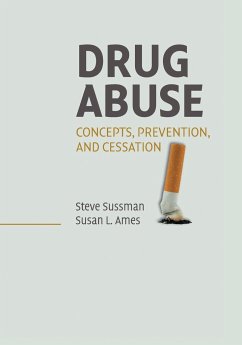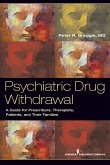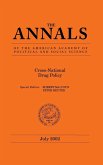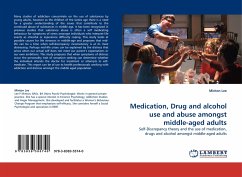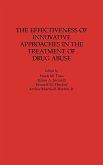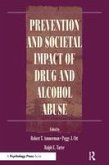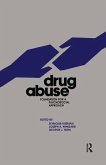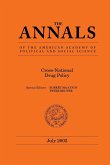- Broschiertes Buch
- Merkliste
- Auf die Merkliste
- Bewerten Bewerten
- Teilen
- Produkt teilen
- Produkterinnerung
- Produkterinnerung
Integrated perspectives about the biological, social and psychological causes of drug problems and how to overcome them.
Andere Kunden interessierten sich auch für
![Psychiatric Drug Withdrawal Psychiatric Drug Withdrawal]() Peter R. MD BregginPsychiatric Drug Withdrawal80,99 €
Peter R. MD BregginPsychiatric Drug Withdrawal80,99 €![Cross-National Drug Policy Cross-National Drug Policy]() Robert MaccounCross-National Drug Policy93,99 €
Robert MaccounCross-National Drug Policy93,99 €![Medication, Drug and alcohol use and abuse amongst middle-aged adults Medication, Drug and alcohol use and abuse amongst middle-aged adults]() Minton LeeMedication, Drug and alcohol use and abuse amongst middle-aged adults32,99 €
Minton LeeMedication, Drug and alcohol use and abuse amongst middle-aged adults32,99 €![The Effectiveness of Innovative Approaches in the Treatment of Drug Abuse The Effectiveness of Innovative Approaches in the Treatment of Drug Abuse]() The Effectiveness of Innovative Approaches in the Treatment of Drug Abuse105,99 €
The Effectiveness of Innovative Approaches in the Treatment of Drug Abuse105,99 €![Prevention and Societal Impact of Drug and Alcohol Abuse Prevention and Societal Impact of Drug and Alcohol Abuse]() Prevention and Societal Impact of Drug and Alcohol Abuse61,99 €
Prevention and Societal Impact of Drug and Alcohol Abuse61,99 €![Drug Abuse Drug Abuse]() Seymour EisemanDrug Abuse221,99 €
Seymour EisemanDrug Abuse221,99 €![Cross-National Drug Policy Cross-National Drug Policy]() Robert MaccounCross-National Drug Policy44,99 €
Robert MaccounCross-National Drug Policy44,99 €-
-
-
Integrated perspectives about the biological, social and psychological causes of drug problems and how to overcome them.
Hinweis: Dieser Artikel kann nur an eine deutsche Lieferadresse ausgeliefert werden.
Hinweis: Dieser Artikel kann nur an eine deutsche Lieferadresse ausgeliefert werden.
Produktdetails
- Produktdetails
- Verlag: Cambridge University Press
- Seitenzahl: 366
- Erscheinungstermin: 30. März 2017
- Englisch
- Abmessung: 254mm x 178mm x 20mm
- Gewicht: 688g
- ISBN-13: 9780521716154
- ISBN-10: 0521716152
- Artikelnr.: 23541869
- Herstellerkennzeichnung
- Books on Demand GmbH
- In de Tarpen 42
- 22848 Norderstedt
- info@bod.de
- 040 53433511
- Verlag: Cambridge University Press
- Seitenzahl: 366
- Erscheinungstermin: 30. März 2017
- Englisch
- Abmessung: 254mm x 178mm x 20mm
- Gewicht: 688g
- ISBN-13: 9780521716154
- ISBN-10: 0521716152
- Artikelnr.: 23541869
- Herstellerkennzeichnung
- Books on Demand GmbH
- In de Tarpen 42
- 22848 Norderstedt
- info@bod.de
- 040 53433511
Steve Sussman, Ph.D., FAAHB, received his doctorate in social-clinical psychology from the University of Illinois at Chicago in 1984. He is a Professor of Preventive Medicine and Psychology at the University of Southern California. He studies the utility of empirical program development methods and multiple addictions, including tobacco and drug abuse etiology, prevention, and cessation. He has over 300 publications. His Projects include Towards No Tobacco Use, Towards No Drug Abuse, and EX, which are considered model programs at numerous agencies (e.g., CDC, NIDA, NCI, OJJDP, SAMSHA, CSAP, Colorado and Maryland Blueprints, Health Canada, U.S. Department of Education, and various state departments of education). He received the honor of Research Laureate for the American Academy of Health Behavior in 2005 and is currently President there (2007-8).
Preface
Part I. Concepts and Classes of Drugs: 1. Concepts of drug, drug use, misuse, and abuse
2. Further classifications relevant to substance abuse and dependence
3. Types of drugs, history of drug use and misuse, and costs of drug misuse
Part II. Etiology: 4, Current multivariable models
5. Neurobiologically relevant
6. Cognitive processes
7. Social interaction and social groups
8. The large physical and social environment
9. Assessment
Part III. Prevention: 10. Concepts of prevention
11. Neurobiologically relevant
12. Cognitive processes
13. Social interaction and social groups
14. The large social and physical environment
Part IV. Cessation: 15. Concepts of cessation
16. Neurobiologically relevant
17. Cognitive processes
18. Social interaction and social groups
19. The large social and physical environment
Part V. Conclusions and the Future: 20. Conclusions, recent, and future directions.
Part I. Concepts and Classes of Drugs: 1. Concepts of drug, drug use, misuse, and abuse
2. Further classifications relevant to substance abuse and dependence
3. Types of drugs, history of drug use and misuse, and costs of drug misuse
Part II. Etiology: 4, Current multivariable models
5. Neurobiologically relevant
6. Cognitive processes
7. Social interaction and social groups
8. The large physical and social environment
9. Assessment
Part III. Prevention: 10. Concepts of prevention
11. Neurobiologically relevant
12. Cognitive processes
13. Social interaction and social groups
14. The large social and physical environment
Part IV. Cessation: 15. Concepts of cessation
16. Neurobiologically relevant
17. Cognitive processes
18. Social interaction and social groups
19. The large social and physical environment
Part V. Conclusions and the Future: 20. Conclusions, recent, and future directions.
Preface
Part I. Concepts and Classes of Drugs: 1. Concepts of drug, drug use, misuse, and abuse
2. Further classifications relevant to substance abuse and dependence
3. Types of drugs, history of drug use and misuse, and costs of drug misuse
Part II. Etiology: 4, Current multivariable models
5. Neurobiologically relevant
6. Cognitive processes
7. Social interaction and social groups
8. The large physical and social environment
9. Assessment
Part III. Prevention: 10. Concepts of prevention
11. Neurobiologically relevant
12. Cognitive processes
13. Social interaction and social groups
14. The large social and physical environment
Part IV. Cessation: 15. Concepts of cessation
16. Neurobiologically relevant
17. Cognitive processes
18. Social interaction and social groups
19. The large social and physical environment
Part V. Conclusions and the Future: 20. Conclusions, recent, and future directions.
Part I. Concepts and Classes of Drugs: 1. Concepts of drug, drug use, misuse, and abuse
2. Further classifications relevant to substance abuse and dependence
3. Types of drugs, history of drug use and misuse, and costs of drug misuse
Part II. Etiology: 4, Current multivariable models
5. Neurobiologically relevant
6. Cognitive processes
7. Social interaction and social groups
8. The large physical and social environment
9. Assessment
Part III. Prevention: 10. Concepts of prevention
11. Neurobiologically relevant
12. Cognitive processes
13. Social interaction and social groups
14. The large social and physical environment
Part IV. Cessation: 15. Concepts of cessation
16. Neurobiologically relevant
17. Cognitive processes
18. Social interaction and social groups
19. The large social and physical environment
Part V. Conclusions and the Future: 20. Conclusions, recent, and future directions.

